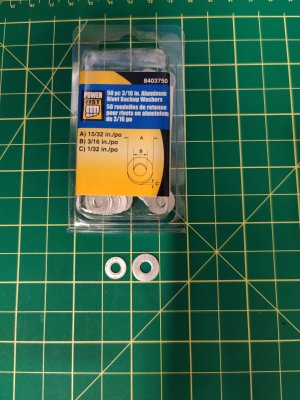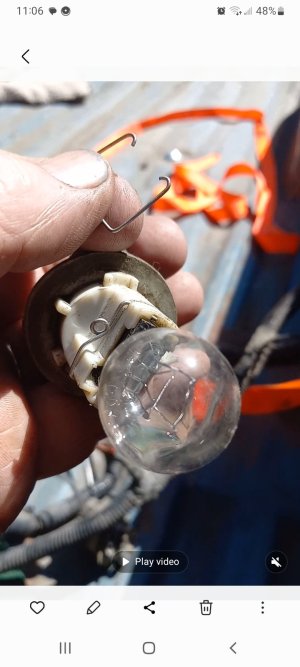-
Scam Alert. Members are reminded to NOT send money to buy anything. Don't buy things remote and have it shipped - go get it yourself, pay in person, and take your equipment with you. Scammers have burned people on this forum. Urgency, secrecy, excuses, selling for friend, newish members, FUD, are RED FLAGS. A video conference call is not adequate assurance. Face to face interactions are required. Please report suspicions to the forum admins. Stay Safe - anyone can get scammed.
-
Several Regions have held meetups already, but others are being planned or are evaluating the interest. The Calgary Area Meetup is set for Saturday July 12th at 10am. The signup thread is here! Arbutus has also explored interest in a Fraser Valley meetup but it seems members either missed his thread or had other plans. Let him know if you are interested in a meetup later in the year by posting here! Slowpoke is trying to pull together an Ottawa area meetup later this summer. No date has been selected yet, so let him know if you are interested here! We are not aware of any other meetups being planned this year. If you are interested in doing something in your area, let everyone know and make it happen! Meetups are a great way to make new machining friends and get hands on help in your area. Don’t be shy, sign up and come, or plan your own meetup!
You are using an out of date browser. It may not display this or other websites correctly.
You should upgrade or use an alternative browser.
You should upgrade or use an alternative browser.
Really ?
- Thread starter jorogi
- Start date
About 20 years ago this spot was developed, three lots fronting on Sooke Road, the main road heading west out of Victoria. As part of the pemit requirements the developer had to install a sidewalk in front of the three lots. Fair enough, it does look odd as there are no other sidewalks in the area and as such the sidewalk is never used. The stupid part though is the sign. If you are smart enough to read the sign do you really need it ? Has anyone ever read the sign and been enlightened ?
Really ?

Really ?

Elektrishun
Ultra Member
Does anybody know where I can get one of those Bluetooth earpieces that allows you to take calls without needing to pull out your phone?
Not the type where you can talk quietly while in a public building.
I want the model where you have to TALK REALLY F**KIN' LOUD while walking around a store full of people. Hopefully, I can find one before my next visit to Princess Auto and time it when I get a call about test results from my doctor regarding that weird rash I picked up while vacationing over seas.
Not the type where you can talk quietly while in a public building.
I want the model where you have to TALK REALLY F**KIN' LOUD while walking around a store full of people. Hopefully, I can find one before my next visit to Princess Auto and time it when I get a call about test results from my doctor regarding that weird rash I picked up while vacationing over seas.
Elektrishun
Ultra Member
Put a frame around it and the federal government will pay a million dollars.Careful when you’re at PA this is an example of what people do when they are there. Really?
Ironman
Ultra Member
A man who wrote a study on functional stupidity said:So one of the things that drives me nuts is simple stupidity. Things that can be simple that are instead made stupid. I have several posts in mind that fit into this category and I invite you all to post up your own.
“Stupidity is a more dangerous enemy of the good than malice. One may protest against evil; it can be exposed and, if need be, prevented by use of force. Evil always carries within itself the germ of its own subversion in that it leaves behind in human beings at least a sense of unease. Against stupidity we are defenseless. Neither protests nor the use of force accomplish anything here; reasons fall on deaf ears; facts that contradict one’s prejudgment simply need not be believed – in such moments the stupid person even becomes critical – and when facts are irrefutable they are just pushed aside as inconsequential, as incidental. In all this the stupid person, in contrast to the malicious one, is utterly self satisfied and, being easily irritated, becomes dangerous by going on the attack. For that reason, greater caution is called for when dealing with a stupid person than with a malicious one. Never again will we try to persuade the stupid person with reasons, for it is senseless and dangerous.”
― Dietrich Bonhoeffer, Letters and Papers from Prison
So true.A man who wrote a study on functional stupidity said:
“Stupidity is a more dangerous enemy of the good than malice. One may protest against evil; it can be exposed and, if need be, prevented by use of force. Evil always carries within itself the germ of its own subversion in that it leaves behind in human beings at least a sense of unease. Against stupidity we are defenseless. Neither protests nor the use of force accomplish anything here; reasons fall on deaf ears; facts that contradict one’s prejudgment simply need not be believed – in such moments the stupid person even becomes critical – and when facts are irrefutable they are just pushed aside as inconsequential, as incidental. In all this the stupid person, in contrast to the malicious one, is utterly self satisfied and, being easily irritated, becomes dangerous by going on the attack. For that reason, greater caution is called for when dealing with a stupid person than with a malicious one. Never again will we try to persuade the stupid person with reasons, for it is senseless and dangerous.”
― Dietrich Bonhoeffer, Letters and Papers from Prison
A man who wrote a study on functional stupidity said:
My dad used to say:
When someone dies, they don't know that they are dead. It's just hard on everyone else around them.
Its the same when you are stupid.
I like that one.My dad used to say:
When someone dies, they don't know that they are dead. It's just hard on everyone else around them.
Its the same when you are stupid.
DPittman
Ultra Member
Yet I try to understand flat earthers (and other conspirists)....I guess maybe I'm the stupid one.A man who wrote a study on functional stupidity said:
“Stupidity is a more dangerous enemy of the good than malice. One may protest against evil; it can be exposed and, if need be, prevented by use of force. Evil always carries within itself the germ of its own subversion in that it leaves behind in human beings at least a sense of unease. Against stupidity we are defenseless. Neither protests nor the use of force accomplish anything here; reasons fall on deaf ears; facts that contradict one’s prejudgment simply need not be believed – in such moments the stupid person even becomes critical – and when facts are irrefutable they are just pushed aside as inconsequential, as incidental. In all this the stupid person, in contrast to the malicious one, is utterly self satisfied and, being easily irritated, becomes dangerous by going on the attack. For that reason, greater caution is called for when dealing with a stupid person than with a malicious one. Never again will we try to persuade the stupid person with reasons, for it is senseless and dangerous.”
― Dietrich Bonhoeffer, Letters and Papers from Prison
I think once you catch the government/media/schools lying to you, it's only fair to question things. And that's probably where I should leave that aloneYet I try to understand flat earthers (and other conspirists)....I guess maybe I'm the stupid one.
Elektrishun
Ultra Member
This just in from the fast paced world of pop rivet back-up washers...
I was working on a project and had to get more 3/16 aluminium pop rivet back-up washers. Grabbed an Arrow brand pack at HD and had to look twice because I thought it was the wrong size. Put them back and went to Princess Auto.
No comparison between the two (disclaimer - the washer on the left is an actor portrayal of the Arrow brand washer because I was too cheap to buy the actual package for the purpose of this comparison).

Arrow package is $2.09 for 30.
Power Fist package is $7.99 for 50 but keep in mind you're getting about 30-40% more aluminium per washer (no real evidence to back this up).
Really? Is my life so boring I'm posting about pop rivet back-up washers???
I was working on a project and had to get more 3/16 aluminium pop rivet back-up washers. Grabbed an Arrow brand pack at HD and had to look twice because I thought it was the wrong size. Put them back and went to Princess Auto.
No comparison between the two (disclaimer - the washer on the left is an actor portrayal of the Arrow brand washer because I was too cheap to buy the actual package for the purpose of this comparison).

Arrow package is $2.09 for 30.
Power Fist package is $7.99 for 50 but keep in mind you're getting about 30-40% more aluminium per washer (no real evidence to back this up).
Really? Is my life so boring I'm posting about pop rivet back-up washers???
140mower
Don
I know, right? It wasn't so long ago that we were making similar observations regarding tall cans vrs the regular ones......... How time flies. 🙄 🙄Really? Is my life so boring I'm posting about pop rivet back-up washers???
That has been the "Gold Standard" at about every place ever that I have seen spray cans for sale,as well as almost every paint locker I experienced in a too-long Military career...Careful when you’re at PA this is an example of what people do when they are there. Really?
From the retail perspective, hang an artists pad of disposable pages, nearby, to be used as a 'test surface', to avoid having to buy paint stripper, several times a year.
Circles back to my lament that you are NOT allowed to hit the stupid with sticks anymore!
How many Ford engineers does it take to screw in a light bulb ?
None, because they screwed up the light bulb.
Luckily it was daylight when I went to change it, so I could see and manipulate the tiny spring clip. What was wrong with the days when there was only three or four light bulbs and screw threads or bayonet mounts ? How is this an improvement ? Why do we have to suffer engineers improving things just so they seem important ?
Really ?

None, because they screwed up the light bulb.
Luckily it was daylight when I went to change it, so I could see and manipulate the tiny spring clip. What was wrong with the days when there was only three or four light bulbs and screw threads or bayonet mounts ? How is this an improvement ? Why do we have to suffer engineers improving things just so they seem important ?
Really ?

140mower
Don
Ya but........ This way you earned your before noon drink. 🙄 😳 😛How many Ford engineers does it take to screw in a light bulb ?
None, because they screwed up the light bulb.
Luckily it was daylight when I went to change it, so I could see and manipulate the tiny spring clip. What was wrong with the days when there was only three or four light bulbs and screw threads or bayonet mounts ? How is this an improvement ? Why do we have to suffer engineers improving things just so they seem important ?
Really ?
View attachment 67536
You have to earn those now ? Some sort of new survival tax ? What is the world coming to ? 🙄Ya but........ This way you earned your before noon drink. 🙄 😳 😛
What was wrong with the days when there was only three or four light bulbs and screw threads or bayonet mounts ?
My recollection is that this wasn't some Ford Engineers brain fart. Generally speaking the auto industry is/was under heavy regulatory pressure to improve lighting reliability and durability. I'm sure you have probably seen the old light bulbs quit and require a turn or to remove and replace them to get them lit again. I certainly have.
Proper bulb retention makes sure that critical vehicle lights remain in place and correctly aligned, even under the vibrations experienced during normal vehicle operation (this vibration can't be over estimated). Reliable lighting is directly linked to both visibity to others and visibility for drivers. I think we can all agree that improvements in vehicle lighting systems can lead to reductions in certain types of accidents and even fatalities.
What was wrong with the days when there was only three or four light bulbs and screw threads or bayonet mounts?
Let me count the ways..... But bottom line is that lots of things changed and the old lighting systems not longer met requirements. In a very real way, they had to die so we could live.
How is this an improvement ?
The auto industry adopted spring retention systems for light bulbs primarily to provide a secure, vibration-resistant, yet cost-effective method for holding bulbs in place within vehicle lighting fixtures.
The spring clip or retaining spring secures the bulb against its seat with sufficient force to maintain both alignment and electrical contact, which are both important for both optical performance and safety.
To expand on that a wee bit, the main reasons for this change include:
Vibration resistance - Vehicles experience significant vibrations. Certainly more than a TV or microwave oven. Unfortunately, traditional screw-in bulbs or friction-fit sockets or twist and turn sockets have a long history of loosening over time. As I said before, we have all seen it. Spring retention systems are much better at absorbing and enduring vibrations. This reduces the chance of bulb failure due to both loosening and filament fatigue.
Secure mounting - The spring system helps ensure that the bulb remains properly seated. This helps prevents intermittent electrical contact.
Cost and simplicity - the metal spring designs are relatively low cost to manufacture and assemble in automotive quantities compared to other ways of doing it. I know that sounds self serving for the industry, but it also reduces cost for consumers too.
Ease of maintenance - Spring clips help facilitate relatively quick and tool-free bulb changes. This is important for both regular maintenance and repairs in the field. Yes, it requires relearning what you used to know, but hopefully you will come to appreciate the change in time.
Why do we have to suffer engineers improving things just so they seem important ?
Again, this wasn't just a Ford Engineers attempt at fame. The entire industry is doing this.
I think that urban legend that some engineer is busy making changes for the sake of reaching for fame is over rated. There is an entire chain of command in place to prevent that sort of thing. Usually, the engineer is just doing his job.
That doesn't mean they never make mistakes or that some ideas are not stupid in hindsight. It happens. I've seen it myself. But I think it's the exception, not the rule. In this case, it's an entire industry shift. One that makes sense - at least it does to me.
I think that urban legend that some engineer is busy making changes for the sake of reaching for fame is over rated. There is an entire chain of command in place to prevent that sort of thing. Usually, the engineer is just doing his job.
You should trust me on this, but as the victim of several general design Day-Glow abortions, in the few aircraft types I worked upon spanning early 1950's tech, up to reasonably present day, nobody I ever dealt with thought Engineers were seeking fame, as much as showing their absolute ignorance on the day to day issues of being able to maintain that aircraft! the going opinion was, that these guys had not so much as seen a wrench, let alone laid hands on one...
Enjoy this...

